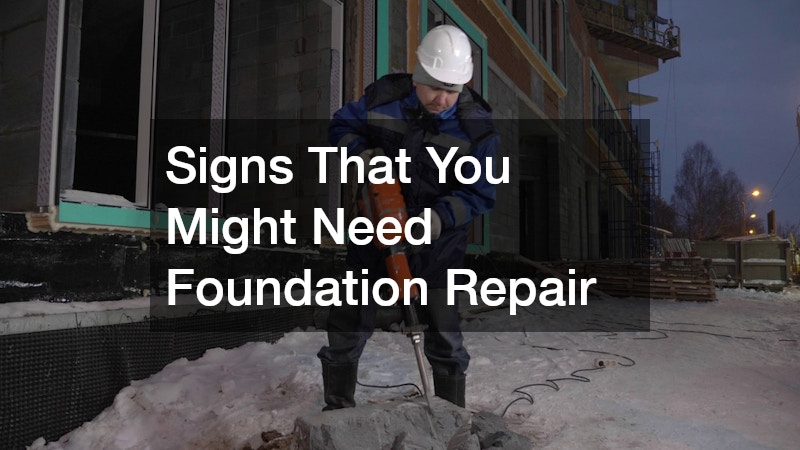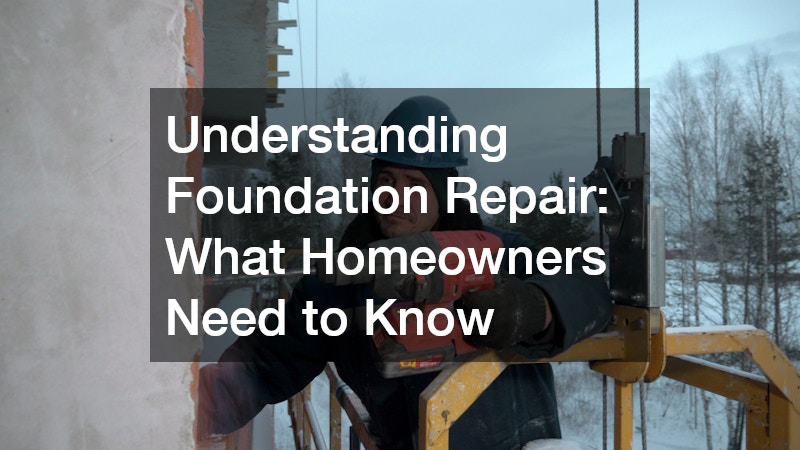When it comes to the structural integrity of your home, few components are as critical as the foundation. Acting as the base that supports the entire structure, your foundation must remain stable and secure. However, over time, many factors can compromise its strength, leading to issues that require professional attention. Understanding foundation repair is essential for homeowners who want to protect their property and maintain its long-term value.
What Causes Foundation Issues?
Foundation problems can arise from a variety of sources. One of the most common culprits is soil movement.
As the soil beneath your home expands and contracts due to changes in moisture, it can place uneven pressure on the foundation. This is especially common in areas with clay-rich soil, which tends to swell when wet and shrink when dry.
Other potential causes include poor drainage, plumbing leaks, tree roots growing too close to the house, or even subpar construction practices. Natural disasters such as earthquakes or floods can also compromise the integrity of your foundation.
Recognizing the root cause is an important step in the foundation repair process, as it helps professionals determine the best course of action.
Signs That You Might Need Foundation Repair
Fortunately, there are several signs that can indicate your home may be experiencing foundation issues. Homeowners should stay alert for these symptoms:
-
Cracks in Walls or Floors: Vertical, horizontal, or stair-step cracks in drywall, brick, or basement floors may point to foundation movement.
-
Uneven or Sloping Floors: A shift in your foundation can cause floors to slope or become noticeably uneven.
-
Sticking Doors or Windows: Doors or windows that suddenly become difficult to open or close could indicate frame distortion caused by foundation movement.
-
Gaps Around Window Frames or Exterior Doors: Separation between doors, windows, and their frames is often a warning sign of foundation trouble.
-
Bowing Basement Walls: If the walls in your basement are starting to lean or bow inward, it may signal that the foundation is under pressure and needs attention.
These symptoms do not always mean the damage is severe, but they should prompt further inspection by a qualified foundation repair specialist.
Common Foundation Repair Techniques
Once an issue has been identified, professionals can employ a variety of techniques to correct the problem. The right solution depends on the type of foundation (such as slab, crawl space, or basement) and the nature of the damage.
-
Piering: This method involves driving steel piers deep into the ground beneath the foundation to stabilize or lift it back into place. Helical or push piers are common tools used in this approach.
-
Slabjacking (Mudjacking): This process involves injecting a grout mixture beneath a sunken concrete slab to raise it back to its original level.
-
Wall Anchors and Braces: For basement walls that are bowing or tilting, anchors or braces can be installed to provide additional support and prevent further movement.
-
Drainage Solutions: Improving water drainage around the home, such as adding French drains or adjusting the landscape slope, can help prevent future foundation problems.
Each technique is designed to address specific issues and prevent further structural damage. A thorough inspection will help determine the best course of action.
The Importance of Early Intervention
Foundation issues rarely resolve themselves. In fact, they tend to worsen over time, potentially leading to more severe structural problems if ignored. Early intervention not only helps prevent more extensive repairs in the future but also protects the overall safety of your home.
It’s also worth noting that foundation problems can impact other areas of the house. Cracks can let in moisture, which may lead to mold growth. Uneven foundations can stress plumbing lines or create gaps that allow pests to enter. By addressing issues promptly, homeowners can avoid these secondary complications.
What to Expect During a Foundation Repair Project
Understanding what to expect during the repair process can help alleviate any concerns homeowners may have. First, a reputable contractor will perform a comprehensive inspection, both inside and outside the home. This may include using laser levels, measuring devices, or soil testing to determine the extent of the damage.
Next, the contractor will propose a repair plan and explain the steps involved. Depending on the severity, the work could take anywhere from a day to several weeks. While some projects may require excavation around the home, others can be done with minimal disruption.
Throughout the process, communication with the contractor is key. Ask questions, request updates, and stay informed. This ensures that you’re comfortable with the work being performed and that it meets your expectations.
Preventative Tips for Homeowners
While not all foundation problems can be prevented, there are steps homeowners can take to reduce the risk:
-
Maintain Consistent Moisture Levels: Avoid extreme dryness or overwatering near your foundation. Use soaker hoses during dry seasons and ensure downspouts direct water away from the house.
-
Inspect Your Home Regularly: Check for signs of damage both inside and outside the house.
-
Trim Trees Near the Home: Keep roots from damaging the foundation by planting trees at a safe distance.
-
Ensure Proper Drainage: Grade your yard so that water flows away from the foundation, and clean gutters regularly.
By being proactive, you can minimize the likelihood of needing foundation repair in the future.
Understanding foundation repair gives homeowners the knowledge and confidence to act when issues arise. Being able to recognize early warning signs, knowing how problems are addressed, and taking steps to prevent future damage can make all the difference in maintaining a safe, stable home. If you’re concerned about the condition of your foundation, it’s always wise to consult a trusted expert. They can assess the situation and recommend the best solutions for long-term stability and peace of mind.

